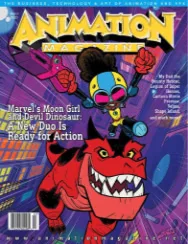
This article originally appeared in the
March ’23 issue of Animation Magazine (No. 328) |
A Mexican-born, Los Angeles based journalist and documentarian Silverio Gama (Daniel Giménez Cacho) goes through a visually arresting existential crisis in Bardo, False Chronicle of a Handful of Truths. Directed by Alejandro González Iñárritu, who is best known of his Oscar-winning feature The Revenant, this well-received mix of memories, reality and dreams is currently streaming on Netflix.
Although the movie had a few false starts along the way due to the COVID pandemic, VFX supervisor Guillaume Rocheron (1917) was a constant presence through the project. He was later joined in postproduction by Olaf Wendt (Snake Eyes) to supervise the visual effects which needed to be photorealistic and seamless so that the audience could feel the same emotional turmoil experienced by the protagonist.
“You take your audience into a scene that seems to be straightforward, but suddenly that transitions into something fairly surrealistic, and then it goes back down,” says Rocheron. “It’s completely interwoven. To be able to find that language, you have to understand somehow where Alejandro wants to go with it.”
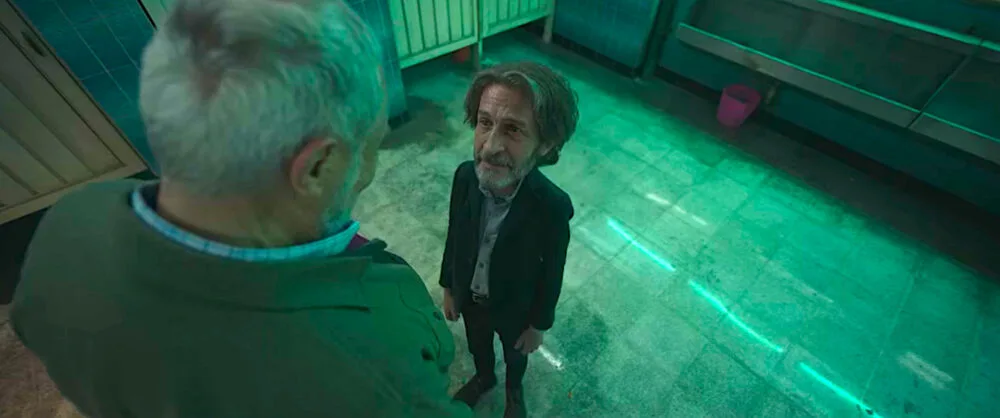
Father and Son Reunion
One of the film’s pivotal scenes takes place in a bathroom scene in which Silverio is talking to his father and literally shrinks down to the size of a child again. The sequence was shot first with Daniel Giménez Cacho and then a second time with an adolescent body double. “We tried to find ways to digitally transition the fairly large adult head onto the neck in 2D,” recalls Rocheron. “Sometimes when the kid is moving, we had to do a full CG body so that the two motions would marry well. Other times we did a CG head on the real body or a full CG character. It’s a constant mix of different techniques. We wanted it to be photographically driven, so we shot all of the elements that we could.”
Another labor-intensive visual effects sequence takes place when Silverio is visiting downtown and suddenly he comes across all these bodies falling on the ground around him. “It looks like a normal shot, but then you suddenly realize that the sun is going really fast, and it transitions from day to night in a single shot,” explains Rocheron. “That was a shot that required a lot of planning because obviously we couldn’t shoot it for real: We couldn’t move the sun outside the streets of Mexico City.”

He continues, “We shot a time-lapse background in the location that we picked and put it into a LED volume so we could light our actor moving into a set piece of the streets. Then, we had a light on a Technocrane to simulate the sun that was synchronized with the footage. In post-production we extracted the actor, put in the streets, added in the CG bodies on the ground, and a cloud that creates shadows. We were always mixing elements of reality and surrealism.”
Silverio travels on the Metro with a bag of salamander-like axolotls in another memorable sequence. “Suddenly we enter a moment of surrealism where the train is flooded and Silverio realizes that the bag is open and the axolotls are swimming away; as he tries to catch them the camera tilts up, you realize that he’s in a flooded apartment in the desert and then we cut back to reality where Silverio is in the subway station,” explains Rocheron.
“The way that we did it was interesting. We couldn’t flood a real train car and get it to move across Los Angeles. Tile plates were shot with a system of 20 cameras mounted on the real Metro in Los Angeles so we could capture background plates that could be stitched together. Then, we built our train car and put that in a LED volume. All of the footage was projected and reflected in the water. When Silverio pursues the animals, it’s a combination of CG axolotls because we wanted to choreograph them. The apartment is also combination of two things. Some plates that we shot of him in the flooded apartment are on a soundstage. In the desert, we shot matching plates of a replica apartment that just had the exterior walls. Then, we combined the two and created some water simulations to go into the other rooms mixed with the sand. We matte painted the whole thing to create this weird surrealistic image.”
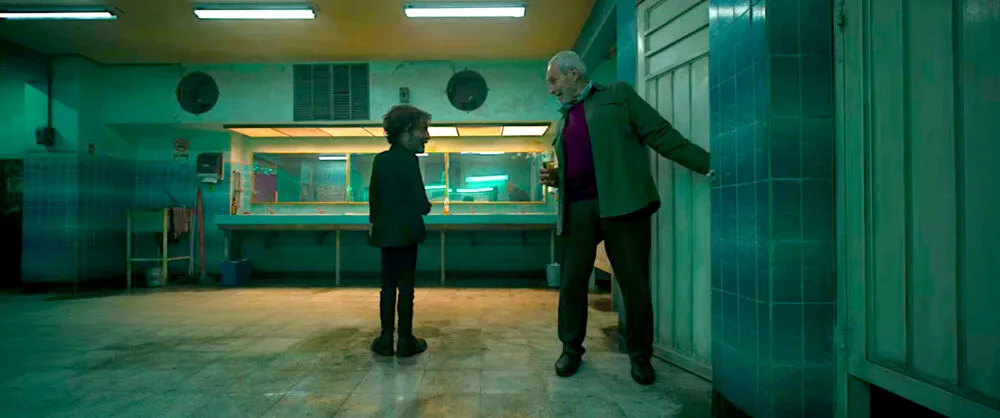
Another remarkable visual were the film’s digital babies, which had to be created as a newborn, three-months-old and a six-months-old. This was approximately the size of a baby turtle and starts off in the hand of his mother, crawls onto the beach and swims into the ocean. “There were two things we were trying to do. Alejandro wanted specific features for the baby, and it was important that we were able to portray the same character at different ages,” remarks Rocheron. “That informed a lot of our decisions to make it a digital character instead of trying to shoot a real baby at any given point. The face of newborn is puffy and often in three months the face has evolved so much that they look very different but at the same time somehow, we had to make them recognizable for the audience.”
The VFX team started with the three-month-old baby and created a full blend shape back to the newborn form. They shot lot of real babies as references for the digital baby’s movements and skin. “Little puppets were made so the actors could manipulate them,” says Rocheron. “It was a tricky exercise because there were a lot of closeups and long shots. A baby is desynchronized. It doesn’t control its movements very well but at the same time you want to make it compelling and relaxed. This was a tremendous exercise in performance.”
Olaf Wendt says one of the reasons the job is always interesting is because every director has their own style of filmmaking. “Alejandro will always ask you to go further which is great, as it pushes you to do the best work and to find the right solution for him,” he says.
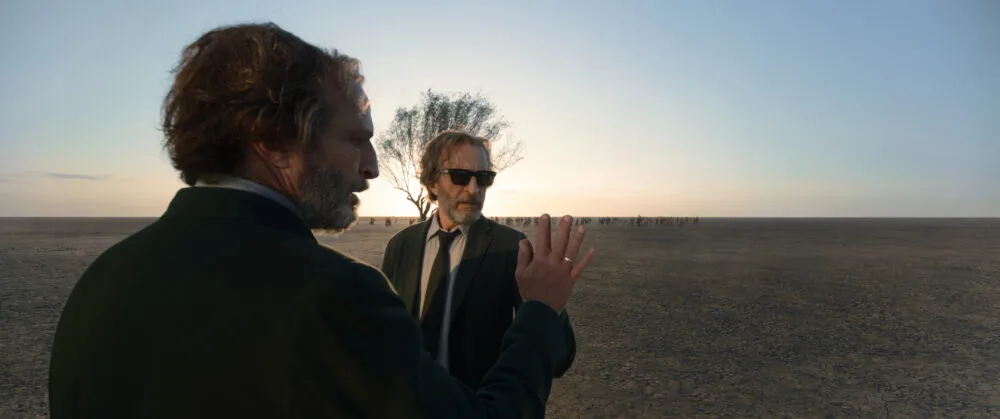
Mix & Match Reflections
Wendt also brings up a scene where Silverio interacts with a reflection of himself. “That was a complicated thing to pull off,” he remembers. “They built a huge mirror in the desert to shoot the two images of Silverio but when you put them together, they were different takes because the reflection of Silverio did not perform the same actions. Then, we were left with all the stuff that needed to be cleaned up. We had a giant camera and whole crew in there. We had to rebuild and replace most of the ground. There was also a row of migrants in the distance walking across which also had to be rebuilt.”
He adds, “We had to piece together the action that Alejandro wanted out of four or five different performance bits to make it seamless. There were a lot of storyboards for those kinds of things and because Alejandro is a visual person, he plans ahead and knows what he is trying to get. But then in the process of execution, it becomes its own journey. You have to find the right balance. It’s incredibly challenging from a visual effects point of view.”
Looking back at the Bardo experience, Wendt says he relished the opportunity of collaborating with Iñárritu. “I loved working on this film, as there are not many projects like this where you have a chance to do the work that helps tell the story of the film, but is also large scale and visually ambitious,” he concludes.
Bardo, False Chronicle of a Handful of Truths is currently streaming on Netflix worldwide. The film was an official selection of the Venice, Telluride, Morelia and BFI London film festivals.



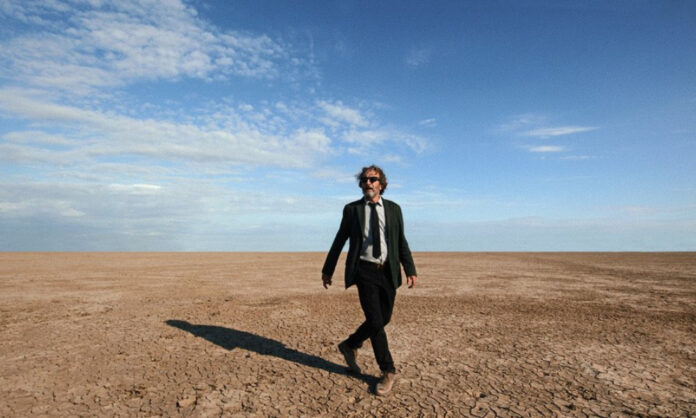
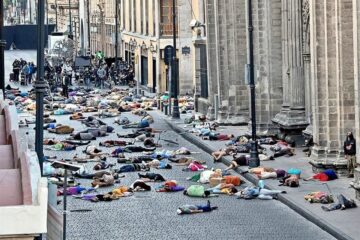

 Win a Funko X Lilo & Stitch Prize Pack!
Win a Funko X Lilo & Stitch Prize Pack!

